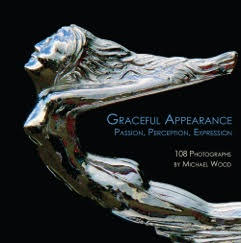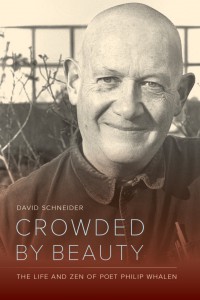Shambhalian from Kiev, Ukraine
April 21, 1964 to October 21, 2014
Tribute and Recollections by Stas Yasynskyy, Kiev, Ukraine
Everything is gray in color; it has become really cold in the extreme of autumn. Somebody on the bus raises their eyes to the sky and says, “First snow.” The wind is slowly helping the leaves to cross the road. A green fence shuts in an unfinished church. On the fence are promising pre-election signs and among them I see one sign saying smoothly, “Protection from lightning and grounding.” My friend Temo Svirely loved to paint the air and green fences. He knew and could convince others that you can’t stain life, for dirt is a manifestation of the ground. Grounding. Protection from lightning. That’s how he lived, between earth and sky.
I am remembering his straight back. He was sitting on the cushion in Bulgagov’s museum, and often would lead the practice alone for many months. I remember his instructions and the very precise and soft strikes on the gong. Those whom he guided in meditative discipline, feeling the taste of the air under their noses, would agree with me. I think about him in the Orthodox church. He holds my tiny son. Temo agreed to be his godfather and a sun ray fell direcly on those two, smooth and clear-cut like a sword.
I also remember him in January, wearing two coats and a nonfunctioning gas mask. He was going to the barricades where that same morning, the first national heroes were killed in Ukraine. As I watched him, I saw that he was facing both his own and the overall fear of the blind shooting and throwing of grenades through the darkness of burning tires.The body that was carrying Temo started to feel badly in February, while at the same time fighting in Maidan became more fierce. The special units stormed the barricades on Grushevskaya street. We bumped into each other from the other side of the barricades, near the first-aid post, which was evacuated in a hurry. It was becoming more scary and darker from the smoke, but Temo was walking very slowly. He told me that he came to the clinic for an IV, but dozens of heavily wounded people were coming in and he wanted to stay and help the doctors. But they expelled him. Later, I learned that he, despite his sickness, stayed on in this scary, burning Maidan, and almost all night was helping to transfer pavers, water, food and fuel to the frontline.
And now he is the first in Ukrainian sangha to die. He is the first to be gone. The house of Temo and Ira cools down from the mourners opening the door. There are kasung on duty next to his body, and a few snowflakes and many petals of fall flowers. Outsiders, seeing people in berets and military uniform, are nodding with understanding. There is a war in Ukraine, dying warriors are constantly getting buried here. And the trident on the Dorje Kasung banner looks very much like a Ukrainian coat of arms.
Temo asked to be cremated. It is not a custom in Ukraine, and there are 45 million citizens and only 2 crematoriums. The one in Kiev looks like Giger’s sketches of entry in the world of “aliens.” The wind is more icy and tightens the flags like banners. Under the flags are many people. Georgians, Ukraininas, Russians. Buddhists, Christians, artists, business people… There is not enough space in the casket for flowers. People love Temo even in each other, turning their heads, trying to remember. Тhey are Svirely’s space as well as his canvases, deliciously smelling Amsterdams’ colors. Temo himself is lying amidst flowers. One week ago he, with flashing eyes, did strokes of Ashe, despite his pain. He was certain that fear and hope were left behind, and that he, at a significant moment could maintain mindfulness and do what is needed to do.
I walk around the crematorium, shuffling leaves. Next to one car I see Temo, alive in a coat with a red silk scarf. I say very quietly: Hello dear. Then I smile and turn away, letting the vision dissolve. Kasung next to the coffin ignite the anthem. The Anthem of Shambhala inflames like a fire, becoming stronger and stronger. The manager stops coordinating – she never noticed before, in this place of shadows, so much light. Even the tears, which are not tears of desperation, are drops of bright light and deep sadness where there is nothing to hold onto.The coffin departs down into the darkness and fire. Temo asked that his ashes be scattered from a particular mountain. Under this mountain twists the silver and precise monster snake of the river Dniepr. The river and mountain will accept the ashes of this human, who loved this country so much. And we will share and carry forward his tiger, lion, garuda and dragon.
The next day the small room is hardly able to be seen through the smoke of the lhasang. At this Shing Kam ceremony, we are calling those who are helping Temo in his travels after life. Today there are only Shambhalians and family. We are sitting in the same place where he left us. The sun is sparkling in the room. Slowly and very brightly his picture is burning. The picture of Temo in front of the background of his paintings shows, and then there is only the background left. Then even the background is burned. No smell, no taste, no forms, no appearances. I know that he is there, with his back straight, and his gaze a little bit higher that usual. Hello, dear! Shambhala Kulika Ki!
To read a profoundly moving letter from Temo to the Shambhala sangha, written just before his death, please click here.
Tribute by Shastri Bill Brauer, Barnet, VermontTemo Svirely helped make Shambhala glorious. He was a classically trained and enormously talented painter with ongoing exhibits throughout Western and Eastern Europe and North America. He painted up to his very last days.
He was a fierce Shambhalian. He co-founded the Kiev, Ukraine Shambhala Center. He loved Sakyong Mipham Rinpoche. He practiced, studied, taught, debated, and pontificated Shambhala dharma. He was a raconteur, sharing endless stories and dreams and visions sometimes fueled by his beloved Georgian vodka. He was very funny and his mangled-English toasts could go on for quite some time, but no one seemed to mind.
He was an outstanding cook. Georgian, Ukrainian and Russian food exquisitely prepared in his tiny Kiev apartment kitchen. He knew spices like he knew color – he could be subtle or bold and always daring.
He was a loving husband and father and was endlessly generous to friends and strangers. He was a Shambhala warrior in every way – brave and kind and confident. He will be missed.
Tribute by Acharya Mathias Pongracz, Vienna, AustriaI feel honoroured and delighted by the fact of having met and had a friendship with Temo Svirely in my life. His creativity, generosity, deep sense of humor, and his fearless and tough warrior spirit were an inspiration for myself and for many other people as well.
His paintings were a witness to the breath of life and the curiosity and delight of a child enticed by the magic of what it means to be alive in this world.
He was a true man from Georgia: fierce and gentle at the same time. He had many stories to tell. Not all of them are told. Some of them he took with him on his way beyond.
His spark is still around. I will remember him and his glow. He reminds me of the unconditional life force present in all forms of life: it is beyond any logic. It is vast and generous, has incredible humor, sadness and joy.
To read a profoundly moving letter from Temo to the Shambhala sangha, written just before his death, please click here.
Donations to the family of Temo are greatly appreciated, and can be offered through the purchase of his artwork. Visit his website here: svirelyart.com






























































